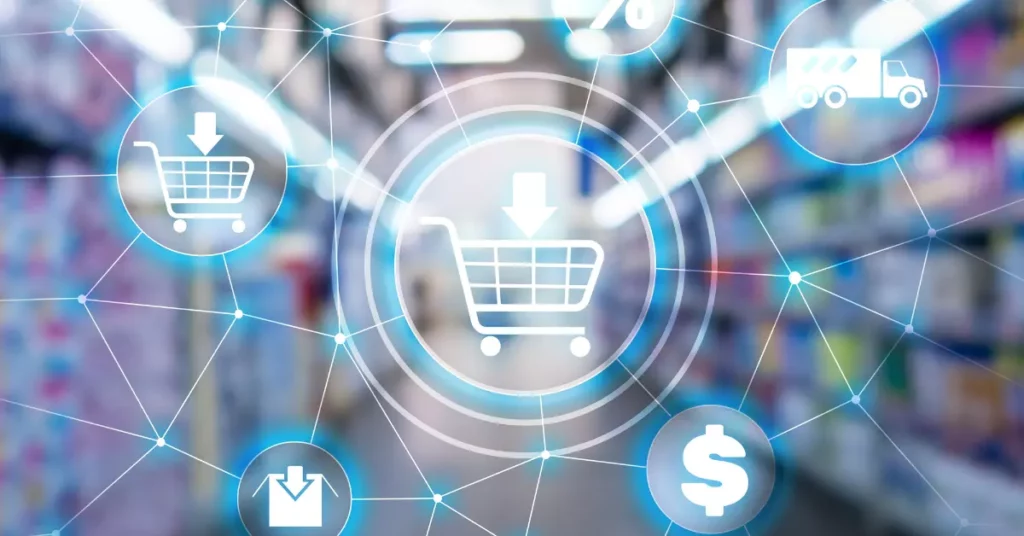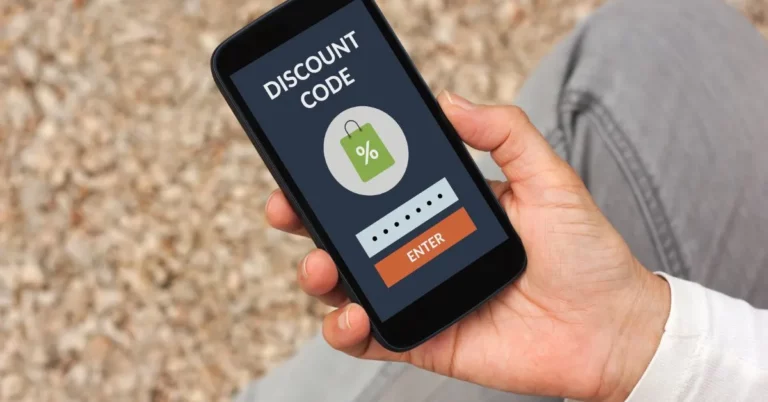If you are looking for more information on eCommerce Marketing then you are in the right place!
With the changing times, the mode of doing business by every industry has experienced a far-reaching transformation. During the last five years, you have witnessed most brick-and-mortars stores shifting their base to online marketplaces. You can now practically do all your shopping online and 24×7, take classes online and even consult a doctor online.
From buying to selling and from taking classes to giving classes, everything is online and easily accessible from a mobile. However, one can only do business i.e. make a profit, if there are buyers for the products or services offered. Every business, big or small needs brand awareness to attract traffic, resulting in conversions and profit.
E-commerce marketing is necessary to create brand awareness and brand visibility for every organization with an online presence. Though many businesses hesitate to invest in digital marketing services, the general perception of eCommerce marketing being expensive is the biggest hindrance for many businesses to take advantage of it to increase their profits.
E-commerce marketing involves many tools and strategies. You can choose the best cost-effective eCommerce marketing strategy to enhance your online presence and increase your sales. Most eCommerce strategies have a larger reach and target potential customers as per your business model. You can use cost-effective digital marketing strategies on social media platforms and digital mediums to create a significant difference in your organization’s profitability.
What is eCommerce marketing?

Ecommerce marketing is the method of using promotional strategies to attract traffic to an online store. It is a method to convert people who show the slightest interest in your products to paying customers and post-purchase retention of those customers.
Simply it is the action that makes people aware of electronic business and results in the sale of its product or service. For example- you have an online business of selling footwear. Now to make your potential customers aware of your store, you can use eCommerce marketing strategies.
It will target your potential customers, make them aware of your products, bring them to your store for purchase, and keep them informed about new additions to your store for future sales. Due to the absence of digital marketing, your online store will have negligible brand visibility or awareness.
The lack of awareness will result in low traffic to your eCommerce business and low traffic will lead to low sales. So basically, it’s all connected- marketing leads to awareness, awareness results in generating traffic, and traffic leads to sales.
Ecommerce marketing can assist you in building your brand awareness, generate traffic, drive customer loyalty, and eventually increase your online sales. An all-inclusive eCommerce marketing strategy consists of various marketing methods used both on and off your website. Ecommerce marketing provides you with the facility to promote your online business as a whole or target the traffic for sales of specific products.
The online marketplace is continually evolving and growing at an exponential rate. Ecommerce marketing strategies and tools provide a great way for organizations and stores to increase their brand visibility, awareness, and guide customers to their eCommerce website to boost revenue.
Ecommerce marketers help businesses to leverage various channels and tools such as email, social media platforms, search engines, etc. to grow their business.
Successful eCommerce marketing strategy uses various marketing tools in synchronization with marketing ideas to increase traffic and conversions. Both eCommerce marketing ideas and eCommerce tools are required for a flourishing business.
Top 10 eCommerce marketing ideas that will improve your ROI in 2022

The top 10 eCommerce marketing ideas that will help you to increase your ROI in 2022 are:
1). Pay per click or Paid Ads
Pay per click or PPC ads are an effective way to increase traffic on your eCommerce store. Paid ads generate sales by giving you the flexibility to select and sculpt traffic-driving criteria to drive reliable traffic.
They generate more sales and have better conversions than ‘free’ organic traffic. PPC brings the high-converting and purchase-oriented traffic you need for your new product launch, sale, or a new venture.
1). Google Shopping ads
Google Shopping ads are premium PPC ads with plush visuals. Generic PPC ads are text-only ads, so compared to them, Google shopping ads let you show the user the product picture and reviews with product price. It is a powerful eCommerce marketing tool highly effective for eCommerce stores.
2). Display Advertising
Display advertising is an advertisement displayed along with a blog post or article. They are more effective when displayed along with a closely matched topic.
For example, a display ad of a high chair is displayed on a blog about baby feed or diet. The ad should be highly specific and matching to the customer intent, page topic, and keywords on the page.
3). Retargeting Ads
Retargeting ads are ads of an eCommerce store or products placed in front of people who had earlier looked for those products or visited the website.
These people have already demonstrated their receptiveness for the products or services, therefore, retargeting ads will motivate them towards purchasing those products or services.
2). Content marketing
Content marketing is a vast marketing field including blog posts, video, imagery, and interactive content leveraged to increase traffic and conversions on the product or service. Video content marketing is the most popular online marketing with high ROI (Return on Investment) and almost 87% of the businesses use it.
Blog posts or written content marketing is not very popular as sales material. They are less likely to influence e-commerce purchasers, though they are a good way to give relevant information. They work best with other marketing channels such as video content, newsletters, or emails.
Interactive content marketing allows e-commerce sites to let their consumers purchase in a way they want to and manage their relationship with the brand, content & products they want to.
3). Delivery and unboxing experience
Delivery and unboxing experience is an interactive marketing tool. Repeat customers for any brand that generates the majority of revenue. To encourage purchase from existing customers delivery and unboxing experience play an important part.
1). Shipping Box design
Brands can ship to its purchasers a unique or experiential box design with look books or catalogs.
2). Coupon codes inside the box
A strategically placed coupon or vouchers in the box to encourage the next purchase or referral customers.
3). Unboxing experience
To encourage repeat customers, unboxing videos of new products are effective for repeat or referral purchases. They generate the same experience as real-time unboxing.
4). Email marketing ideas
Email marketing is an effective and secret weapon for most eCommerce marketers. Most businesses use email marketing to a great extent as it has a higher ROI than search or social or content marketing. Email marketing provides numerous opportunities for businesses to get in touch with their potential or existing customers.
They can send emails for every store visit, or no visit, a new product launched or discontinued, sale starting or sale end, or special occasions like birthdays and anniversaries. There are unlimited occasions and reasons to send emails and they can give high conversions when done effectively utilizing the targeted flows.
5). On-site marketing
On-site marketing is one of the best eCommerce marketing tools. Your site can produce almost the same or more conversions through on-site marketing as with paid ads, email marketing, or content marketing.
You can have traffic come to your site, sign up for your site, come back to look at the product, and do the purchase. So for on-site marketing consists of three parts:
1). Forms
Sign-up forms should be simple and quick to fill. Reduce non-relevant details for quick check-out and let the customer browser fill fields such as name, email, etc.
2). Email sign-ups
Making people sign-up for your email list is an important step to convert them to buy something. It improves the chances of them becoming your customers one day.
The sign-up process should be effective and not intrusive for people to give their real email id. Don’t bundle up the sign-up request with consents such as cookie consent or other legalese.
3). Products pages
Most eCommerce stores have numerous products and each product has its own product page. The product page should be designed in such a way that it gives clear details about the product, answers any & all queries of the customer, represents the brand and has impressive images of the product. A short and clear video of the product can be added to enhance the product page.
6). Selling Through Social Media
In the current scenario, social networks are playing a major role in boosting sales. Organizations are actively setting up social media profiles to display their products and services in front of their buyers for better conversions instead of waiting for the customers to come to their online stores. Some popular social media platforms are:
1). Instagram
Instagram is a visual platform and people can easily sell or buy products when they can visualize the product on the platform. With the “Shop Now” button one can access the website from where the product can be bought.
2). Facebook
Facebook Marketplace is ideal for people who want to sell locally or sell crafts or have a consignment goods store. The simple design of the Marketplace lets the user list their shop and sell their products with ease.
3). YouTube
YouTube is the perfect platform for video content marketing. Regular posting of crisp product videos generate subscribers who become customers.
7). Market Your Business Beyond Geographic Boundaries
You can market your business beyond geographic boundaries by using many eCommerce marketing tools. Email marketing and mobile apps are the easiest ones. They can promote and bring traffic to your website to boost sales.
8). Highlight Reviews
Highlighting the best customer reviews of your product can help prospective buyers to make a positive choice. You can add highlight reviews to your website, mobile app, or social media.
Highlighting the relevant reviews brings them into focus and increases the chances of people coming to your site reading them.
9). Optimize for voice search
Voice search has gained great mileage in the current world as it is more convenient for any user. People are super busy so instead of typing they prefer giving their voice command while doing other things. Also, they want faster responses, for that voice search is best.
Any business can optimize voice search features for better visibility and revenue. Though ensure that most voice searches happen on mobile, so your site should be mobile friendly and have a responsive web design.
10). UGC and influencer marketing
UGC (User Generated Content) and influencer marketing have become very popular and effective in boosting sales. Everyone wants to know how the product or service they are planning to go for is actually good or not.
For that, they depend on reviews of people who have already used them. For this UGC and influencer marketing come into play and provide great growth opportunities to brands.
11). Augmented Reality
eCommerce business owners that decide to include augmented reality in their stores come off as fully committed to the products they are selling, believe in what they are supplying, and want to provide the greatest possible shopping experience for their consumers.
From fashion and beauty to home decor and furnishings, AR is utilized in a wide range of industries.
According to Statista, the retail sector will make up 5% of the market for augmented and mixed reality software by 2022, with AR spending in this sector estimated to reach $80 billion.
Top 10 eCommerce marketing tools to use in 2022

The top 10 eCommerce marketing tools that will help you to increase your ROI in 2022 are:
1). Prisync
Prisync is a dynamic pricing and repricing app which analyses competitor pricing, tracks, and monitors it. This eCommerce marketing tool helps you to optimize your prices vis-à-vis your competitor to maximize your revenues and profitability.
The app helps you save time and money by automatically syncing and comparing competition prices by tracking and monitoring prices.
You can apply your own dynamic price rules for the smart auto-pilot pricing of your products to increase sales and profit. The app also offers flawless integration and excellent customer support.
2). Keap
Keap is perfect for easy automation of repetitive tasks and business-oriented communication. It is ideal for any start-up or growing business or established business that offers services or products.
The eCommerce marketing tool offers two great automation ways to grow your business- Keap’s Easy Automation and Keaps’s Advanced Campaign Builder. Both give you the freedom to automate repetitive tasks in a faster and effortless way.
You can create simple templates to acquire new leads and create a repeatable sales process by tracking & managing leads at one place, assign tasks, and send emails to prospective customers to grow your business. You can create a repeatable sales process.
3). Rejoiner
Rejoiner helps you manage your entire email channel and maximize your customer lifetime value by providing you with email marketing software & tools, and hands-on consulting.
It benefits your business by reducing your cart abandonment, increasing your conversion rate, and achieving your revenue goals. With Rejoiner you centralize your customer data, compile and maintain a complete customer profile by combining browsing behaviors, purchase history, and marketing interactions.
It has built-in flexible automated triggers that deliver marketing emails to customers throughout their lifecycle at opportune moments such as cart abandonment, price drop, browse abandonment, post-purchase, win-backs and birthday send.
4). AdNabu
AdNabu has a Google shopping Feed app that is perfect to increase your Google Shopping sales by sending keyword-rich and Google-friendly data to Google.
Sending just data to Google will not result in traffic and sales, though sending data with modifications will show up in Google searches and increase your brand visibility.
AdNabu lets you customize your products with meta fields together or separately within a few minutes. It also gives you product-specific suggestions to improve sales.
5). TaggShop
TaggShop is a powerful visual eCommerce platform that empowers its B2B clients to discover engaging user-generated content from multiple social media sites and display as shoppable content by collecting and curating the content through its easily manageable dashboard.
It is good for audience engagement with various campaigns and content management. Taggshop provides sales & traffic insights, increases conversions, and provides performance analysis.
6). YoGrow
YoGrow provides simple eCommerce analytics for your organization to help you increase your sales and growth. It measures live performances, prepares readable email reports, and gives historical data comparison for months or years to identify trends. YoGrow is good for increasing client reach, improving sales conversions, and recurring payment.
7). DotDigital
DotDigital equips your business with an engagement interface to utilize data of your targeted customers for personalized Omni-channel marketing campaigns.
By the insights gained from your targeted customers’ data, you can effortlessly create email campaigns or SMS campaigns to generate more revenue. It is perfect for email campaign management and scheduling SMS, mobile, or web campaigns.
8). Promo
Promo is a world-renowned video maker. The leading video maker allows you to grow your business with videos by means of generating leads. It has a creative hub with unlimited video content which provides you the feasibility to promote anything with endless creativity options.
Promo assists you to reach millions of customers, publish and promote unlimited creative content for effective results.
9). Reactful
Reactful empowers you to expand your page views, increases leads captured and improves conversions. It provides you with AI-driven predictive personalization with which you can increase your page views and provide fascinating experience to your customers with successful engagement for effective conversion.
Reactful has an easy to use UI which monitors gestures, scrolls, swipes, and clicks in Real-Time. It also provides personal notification and guidance to repetitive users to boost engagement and improve conversions.
10). Triberr
Triberr is a leading content marketing platform having a community of tribes that assist you to boost up your comments and social reach. The platform is for professional bloggers and influencers to enhance their content and social presence by enlarging their share.
It offers many features such as Triberr Distribution, Triberr Promote, Triberr Community, Triberr Analytics, Triberr Queue, and Triberr Curate to collaborate more professional and influencers for a deeper social reach and share.
Conclusion
Ecommerce in 2022 is bigger than before and has new challenges. To overcome these challenges, eCommerce marketing ideas and eCommerce marketing tools are useful.
And now that you know everything you need about eCommerce marketing, you can also consider partnering with a supplier, as you probably know by now classical eCommerce management can drain you of time and money, so why not consider switching to one of the biggest eCommerce innovations of the latest years?
We are talking of dropshipping of course!
Read also: What is Dropshipping and how does it work?
“Dropshipping” is a type of fullfillment method that has got a few differences in comparison to the classical eCommerces, for example, if you decide to dropship your products, you no longer need to:
- Invest enormous amounts of money in the purchasing of products beforehand, with dropshipping you only buy the product when you have already sold them!
- Spend countless hours in the management and shipping logistics, as your supplier will do it for you and ship your parcels directly at your clients’ doorsteps;
Read also: How to Become a Dropshipper in a few clicks
Sounds alluring doesn’t it? But there’s more!
As you dropshipping supplier, Yakkyofy can source for you over 12 million products in real-time, and give you back a quote at B2B prices! We can also personalise your packaging and products so thanks to our software you will also be able to automate entirely your sourcing and fulfillment process, in just a few words: we will automate your whole business!
But it does not end here, because we can not only source your items but also arrange to get a 3D AR model at the same time!
So what are you waiting for?
Author:
AdNabu helps improve sales in Google Ads for eCommerce companies. If you are running the search, google shopping, or display campaigns in Google Ads, This software will be able to increase your sales.











